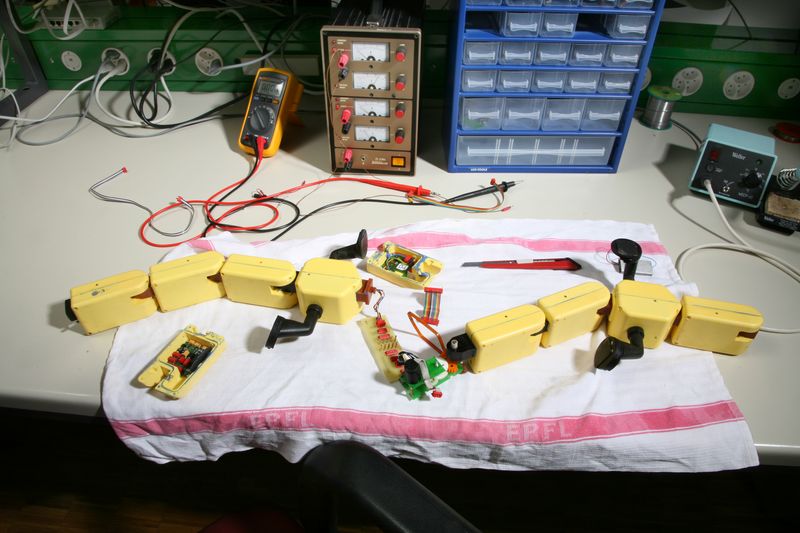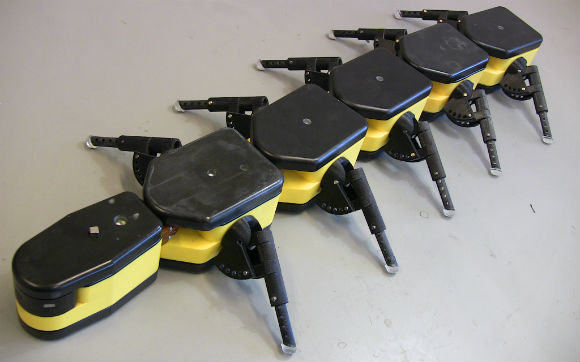Salamandra Robotica II - amphibious robot that swims in water and crawls on the ground

If you are a fan of a robot dog or a cheetah robot from Boston Dynamics, you probably know that engineers created inspiration from land animals to create their creations. As for water, there is a mass of robots, fish and unmanned underwater vehicles, which can compete in a number of tasks (for example, search for underwater mines) even with dolphins.
But what about a robot that can move from water to earth and again into water?
')
This is a difficult problem over which engineers from the EPFL Biorobotics laboratory in Switzerland and the University of Bordeaux in France have been working for several years. In 2007, a development team published an article in the journal Science , announcing the development of a four-legged salamander-like robot with a moving spine. Now they have introduced the next generation of amphibious robot called the Salamandra Robotica II . The new version is faster and more reliable than the previous one. All the improvements were obtained as a result of a deeper study of the motor system of the animal.
This is a robot that can “walk” like a lizard, crawl like a snake and swim like a fish, just changing the power of the control signal.
Movement on the ground is achieved by rotating the limbs, but swimming is an order of magnitude more difficult task requiring non-linear oscillatory movements.
A remotely controlled robot can change modes of motion simply by adjusting the signal strength that goes along the spine. And not without reason. Professor Ijspeert and his colleagues deliberately designed the robot's control system in the likeness of the salamander's nervous system, so the neural-like chains pass through its “spinal cord”. The signal comes from the "brain" and passes through the entire length of the robot, simulating a biological model of a salamander.
Another interesting feature of this robot is its modular design, which makes it very easy to make it longer or shorter. The modularity of robots is generally very entertaining, since A large structure can be built from simple components as the functionality grows, as Lego parts or biological cells are used to create more complex structures. In one of the videos on the band’s website , the robot loses its tail, but both parts continue to function. The other is divided into three separate parts, and each of them continues to work normally. The fact is that each module has its own microcontroller, battery and motors. Modules can be connected in multiple ways to get one more functional robot or replace damaged components.

The lab is also actively working on other similar projects, such as Amphibot, which depicts a snake or eel, like Salamandra Robotica II, but without legs. Researchers are also looking for ways to do a salamander work- articulated legs for better handling. And if you have any fears about giant centipedes, the bad news is for you - the modification might be her too. :)

Of course, all these robots are being developed now, primarily for research purposes. But in the near future they can be used, for example, in search and rescue operations . The truth is not so difficult to imagine how such a principle can be used for military purposes. “Low-coming” amphibian robots may be ideal to go unnoticed, for example, in reconnaissance operations.
The conclusion is simple - if animals do something cool, someone will sooner or later embody it in robots.
Source: https://habr.com/ru/post/174839/
All Articles